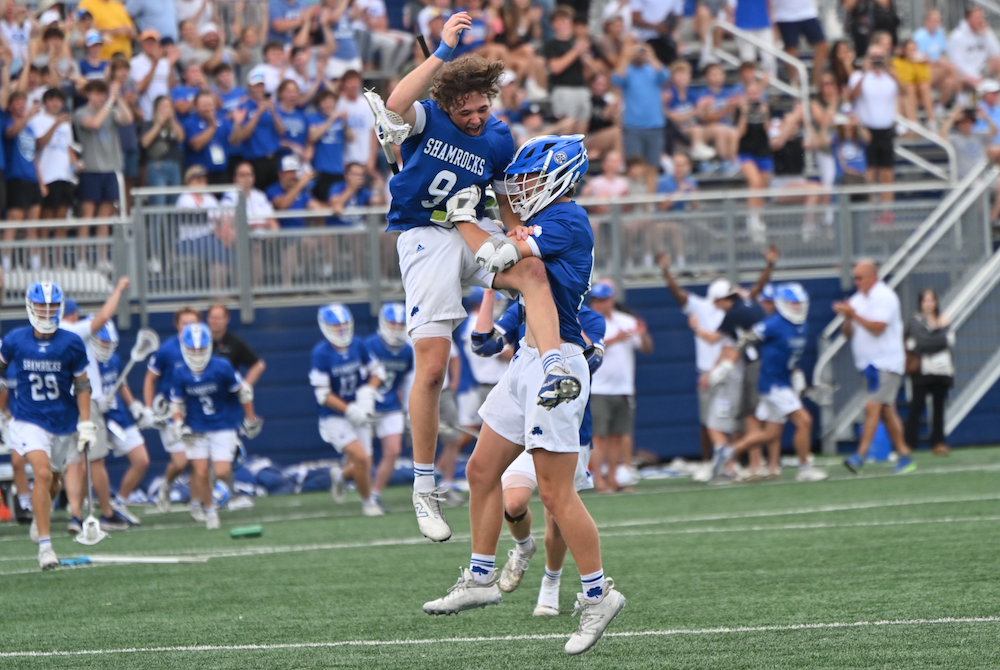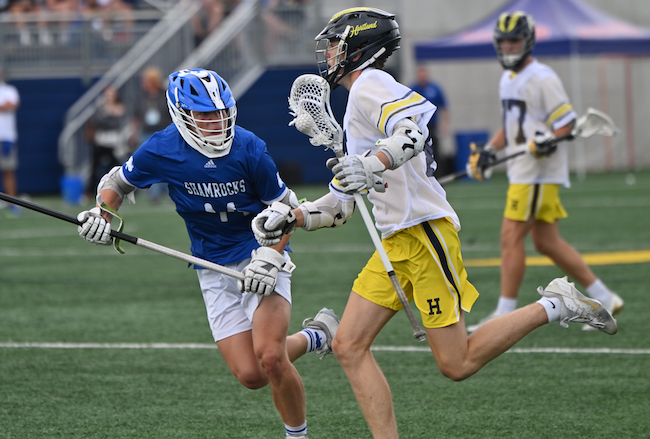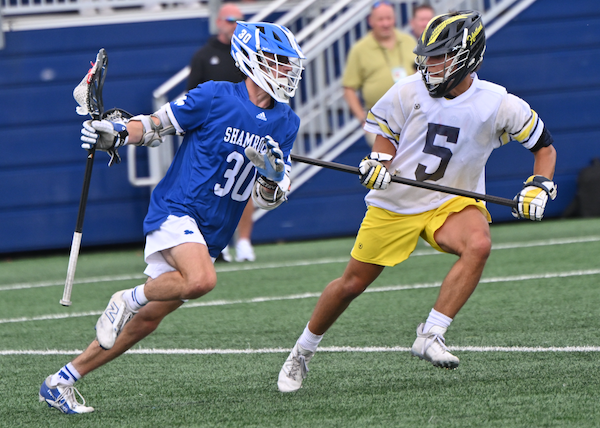
Casting Lines for Future Tournaments
August 12, 2016
By Jack Roberts
MHSAA Executive Director
The MHSAA is best known to the public for the tournaments it conducts to conclude the fall, winter and spring seasons each school year.
These tournaments, the first and largest program of the MHSAA, have survived the Vietnam War, the Korean conflict and two World Wars. They have survived the technology bubble, the housing collapse, the energy crisis and the Great Depression.
MHSAA tournaments existed at the dawn of aviation and at the time of our nation’s lunar landing. Popes, presidents and governors have changed and changed again and again, and MHSAA tournaments roll on year after year.
But the sense of tradition and permanence and inevitability of MHSAA tournaments doesn’t dissuade us from asking questions about our tournaments, even some of the most basic questions. Here are two.
Question #1
I have long been and will always be an advocate for a Ryder Cup format for the MHSAA Golf Finals, and a team tennis approach to the MHSAA Tennis Finals; but 90 years of tradition is hard to overcome. Might this be a more exciting format? Could it be co-ed? Could it reverse the decline in boys tennis participation, and increase girls golf participation? Wouldn’t it be fun to try?
Periodically, the International Olympic Committee requires each of the designated Olympic sports to defend its status, to state its case why the sport should remain a part of the Olympic program. Then, after a series or votes that retain one sport at a time, the IOC drops the sport that makes the weakest case. It does so to make room for one of the previously unlisted sports that makes the best case for inclusion.
This would appear to keep the existing Olympic sports on their toes, and to keep the Olympic movement fresh and reflective of modern trends in sports.
While I would not enjoy the controversy, I can see the potential for some positive results if the MHSAA were to invoke the same policy for determining the 14 tournaments it will provide for girls and the 14 for boys.
This might cause us to consider more deeply what a high school sport should look like, or at least what an MHSAA tournament sport should stand for.
On the one hand, we might be inclined to drop tournaments for those sports that involve mostly non-faculty coaches and non-school venues, or require cooperative programs to generate enough participants to support a team, or resort almost entirely to non-school funding, or cater to individuals more than teams.
Or perhaps this process would cause policymakers to forget traditional thinking and ask: “In this day and age, should we shake off traditional notions of sport and consider more where modern kids are coming from?” That might mean fewer team sports and more individual sports, more “extreme” sports like snowboarding and skateboarding, and more lifetime sports, meaning not just golf and tennis and running sports, but also fishing and even shooting sports.
Currently, MHSAA policy states that the MHSAA will consider sponsorship of a tournament series for any sport which 64 member schools conduct on an interscholastic basis as a result of action by the governing boards of those schools.
Should the only question be how many schools sponsor a sport, or must an activity also have certain qualities and/or avoid certain “defects?” What should an MHSAA tournament sport look like and stand for?
Question #2
Bristling from criticism that his association is a money-grabbing exploiter of children, my counterpart in another state said, “If we were running our programs just to make money, we would do very many things very differently.” I knew exactly what he meant.
Because we care about the health and welfare of students, because we mean what we say that the athletic program needs to maximize the ways it enhances the school experience while minimizing academic conflicts, and because we try to model our claim that no sport is a minor sport when it comes to its potential to teach young people life lessons, we operate our programs in ways that make promoters, marketers and business entrepreneurs laugh, cry or cringe.
If money were the only object, we would seed and select sites to assure the teams that attracted the most spectators had the best chance to advance in our tournaments, regardless of the travel for any team or its fan base. If money were the only object, we would never schedule two tournaments to overlap and compete for public attention, much less tolerate three or four overlapping events. If money were the only object, we would allow signage like NASCAR events and promotions like minor league baseball games.
Those approaches to event sponsorship may not be all wrong; they’re just not all right for us. And we will live with the consequences of our belief system.
During a typical school year, more than 20 percent of the MHSAA’s 2,097 District, Regional and Final tournaments lose money. Not a single site in golf, skiing or tennis makes a single penny. In no sport did every District, Regional and Final site have revenue in excess of direct expenses.
In fact, in only three sports – boys and girls basketball and football – is revenue so much greater than direct expenses overall that it helps to pay for all the other tournaments in which the MHSAA invests.
That’s right: invests. When we present our budget to our board, we talk about the MHSAA’s investment in providing tournament opportunities in all those sports and all those places that cannot sustain the cost of those events on their own. How much is this investment worth to students, schools and society?
These two are core questions that require our focus far in advance of talk about scheduling, site selection, seeding and the myriad matters that too often hijack our time and attention.

Quick 2nd-Half Strike Sparks Detroit Catholic Central to Comeback Win
By
Drew Ellis
Special for MHSAA.com
June 8, 2024
ANN ARBOR – The Detroit Catholic Central offense knew what it was capable of – but just needed to show it.
After being shut out in the first period of Saturday’s MHSAA Division 1 boys lacrosse championship game at University of Michigan, and trailing 6-3 at the break, the Shamrocks needed a spark.
That spark came in the form of a Lachlan Moffatt goal just 13 seconds into the second half, which started an 11-2 run for DCC on the way to a 14-8 victory.
“Hartland was playing really well. We just weren’t capitalizing, which is really kind of strange for us. I think when we got that first goal of the third quarter, that really changed the complexion of the whole thing,” Detroit Catholic Central coach Dave Wilson said.
Even after the Moffatt goal, the Shamrocks (21-3) still didn’t take the lead until late in the third quarter. Senior midfielder Matthew Aleva would fire off a laser that found the back of the net with 4:14 to play in the period, tying the game at 7-7.
Minutes later, Aleva would take a pass from Moffatt and find the net again to give the Shamrocks their first lead – one they wouldn’t relinquish.
 “They were big and I knew we needed to swing the energy on to our side,” Aleva said of his two goals. “We had to rally back and come out in the second half with a Game-7 mentality. We found that energy and we made sure to play the way we know we could.”
“They were big and I knew we needed to swing the energy on to our side,” Aleva said of his two goals. “We had to rally back and come out in the second half with a Game-7 mentality. We found that energy and we made sure to play the way we know we could.”
The Shamrocks won all 14 faceoffs in the second half, which allowed them to control possession most of the final two periods and take a 32-8 shot advantage over Hartland (19-4).
“Faceoffs had a lot to do with it. At the end of the day, (Catholic Central) had a couple of strong draw guys who are really talented players,” Hartland coach Nick Levanti said. “You have to come out with other ways to win, whether it is winning possessions, winning ground balls, tying it up, clearing better. Ultimately, I felt (Catholic Central) came out hungrier to do those little things.”
It was Hartland that looked hungrier during the first half. The Eagles took a 3-0 lead after a quarter of play, thanks in large part to the play of freshman goalie Nate Anderer. He made six saves in the first period and finished with 19 for the game.
“He’s always locked in, and he’s a great player,” Levanti said of Anderer. “That’s a performance you can expect him to give. He has that type of capability in any game.”
With Catholic Central not finding the net at its accustomed frequency, it relied less on its passing to score and worked individual battles. Seven of the 11 second-half goals were unassisted.
“Every game takes on its own personality. We weren’t moving off-ball well, so guys had to really take it on their own and stick the ball in the net, and they did,” Wilson said.
 Luke Zajdel led Catholic Central in scoring with five goals, four of which came in the second half. Moffatt finished with three goals and two assists, while Francisco Williams and Aleva each had two goals.
Luke Zajdel led Catholic Central in scoring with five goals, four of which came in the second half. Moffatt finished with three goals and two assists, while Francisco Williams and Aleva each had two goals.
Hartland was led by Dylan Ayotte, who had two goals. Easton Culver had one goal and two assists for the Eagles.
Saturday marked the first time the Division 1 Final didn’t feature Bloomfield Hills Brother Rice. The Warriors had appeared in every D1 Final since the sport received MHSAA sponsorship in 2005.
The only two Finals Brother Rice had lost came against Catholic Central (2018) and Hartland (2022), respectively.
Catholic Central became the first program aside from Rice to win multiple MHSAA Division 1 titles.
“It’s sheer dedication to try and get to this game every year,” Wilson said. “It requires a ton of commitment and skill and unselfishness and learning how to be coachable. These guys did it. We felt that early on, that these guys had the potential to do that.”
PHOTOS (Top) Detroit Catholic Central celebrates its Division 1 championship Saturday. (Middle) A Hartland player brings the ball upfield while DCC's Brody Wojcik defends. (Below) The Shamrocks' Matthew Aleva (30) makes a move as Hartland's Braden Streight defends.

